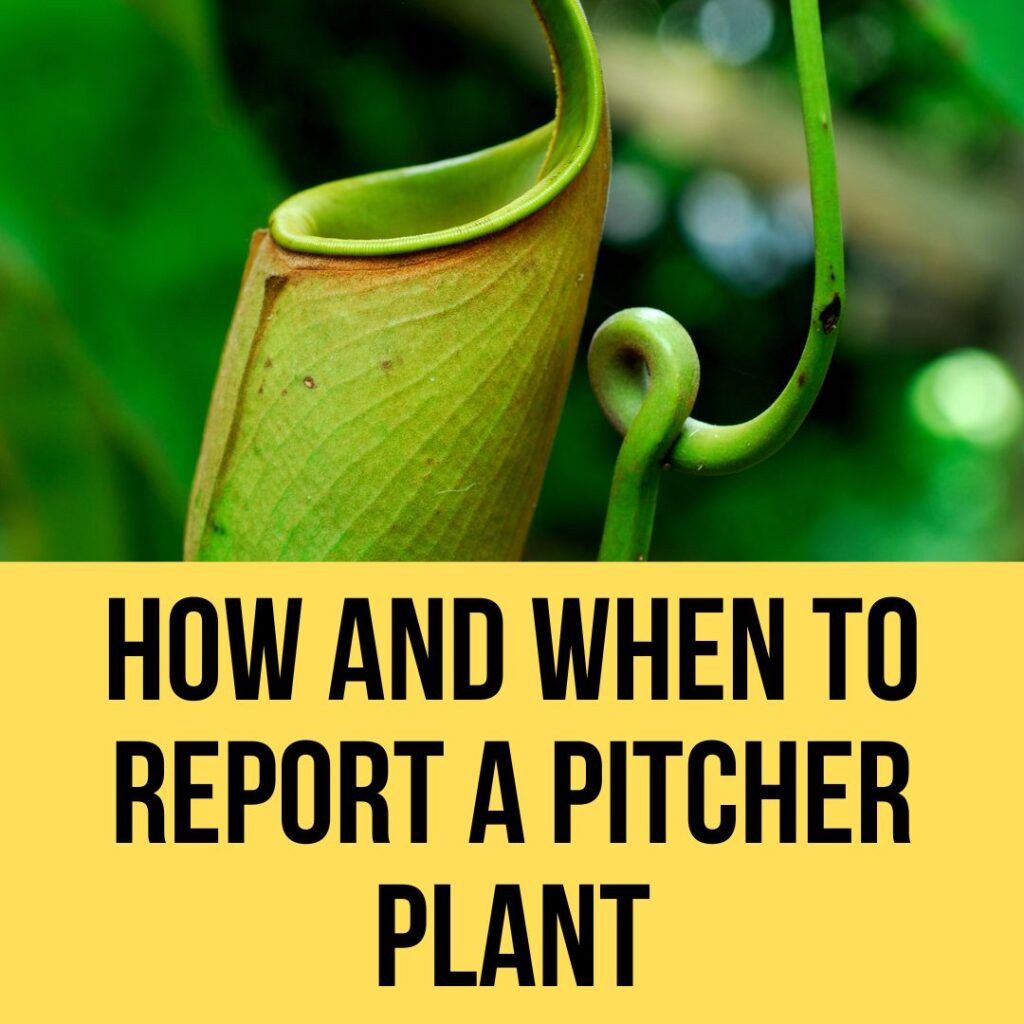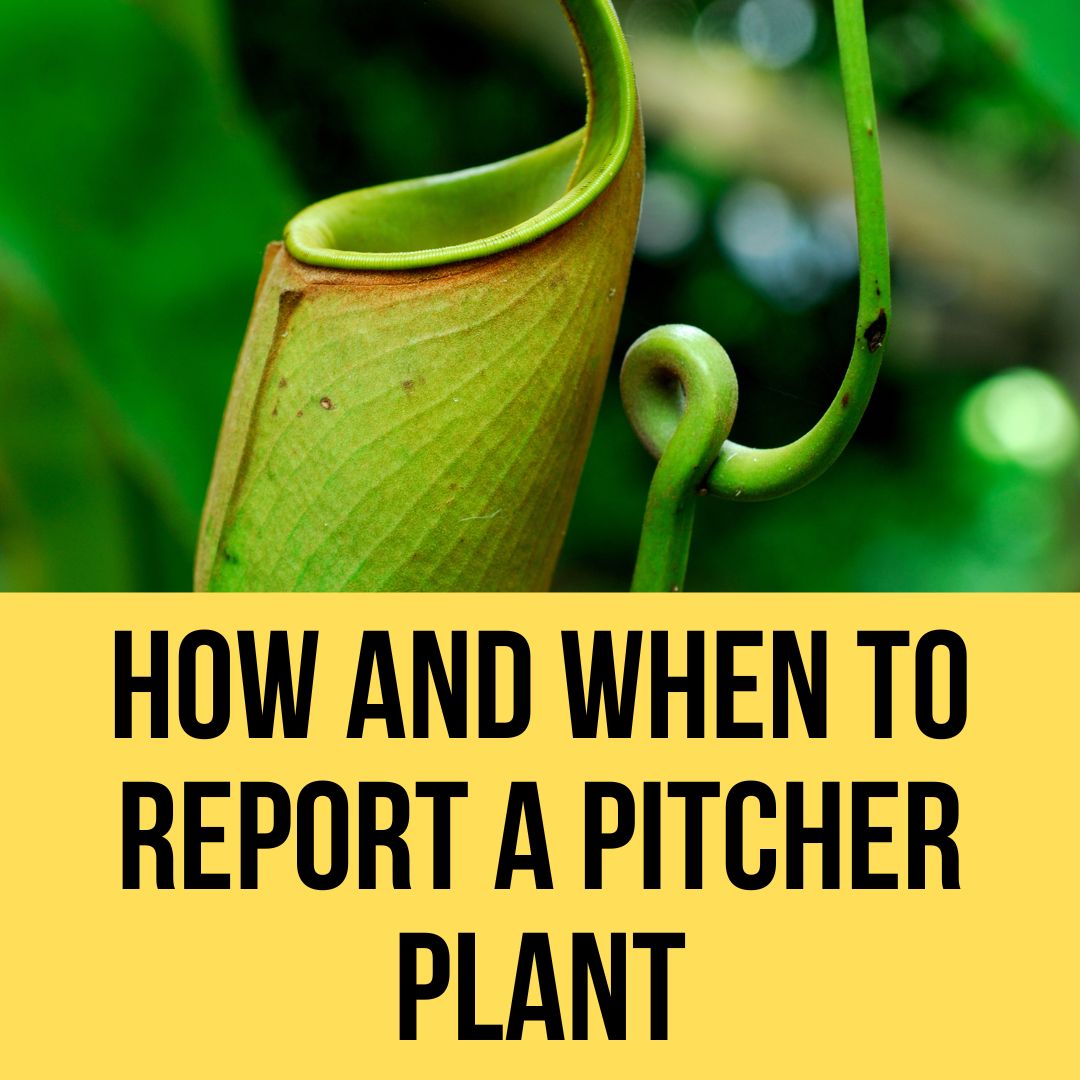Carnivorous plants that consume insects are referred to as pitcher plants. Pitcher plants have modified leaves that they call pitfall traps. These traps have the appearance of vases and are loaded with nectar that serves as a digesting fluid for the insects they capture. The enzymes of the plant then begin the process of digestion after the prey has been brought into the pitcher traps.
Your exotic pitcher plants are the same as any other healthy houseplant in that they will ultimately need to have their pots replaced. Your plant will soon outgrow the soilless mix since it will compress and shrink over time, which will leave the roots with very little area to expand.
If you are curious about when you should repot a pitcher plant, the optimal time frame is anywhere between one and two years. If you know how to repot pitcher plants, your collection of carnivorous plants will be able to move into more spacious digs.
Why Should I Repot A Pitcher Plant into a New Container?
Because the potting mix in the container will eventually consolidate and become less volumetric over time, you will need to repot your pitcher plant at regular intervals. Because of this, the roots of your pitcher plant will have a very tough time developing. If you are curious about how frequently you will need to repot your pitcher plant, the usual rule of thumb is that you should do it once every year or once every two years. When it comes to repotting your pitcher plant, the beginning of spring is the ideal time to do it.

It is a nice time of the year to re-pot plants after the period of hibernation that occurs throughout the winter has ended. After that, you’ll begin your early spring journey with your pitcher plants. If you desire extra plants, you may also split them after the winter if you have them.
By re-potting your pitcher plants, you will ensure that there is sufficient area for the plant’s roots to spread out and develop. Your pitcher plant won’t have feelings of being crowded or constrained, and it should have room to grow in order to maintain its health. Because it is immediately before your plant will develop new growth, it is the optimum time to re-pot your pitcher plant, just as it is the best time to re-pot many other plants.
- It is necessary for you to prepare a potting mixture.
- It is imperative that you transplant your pitcher plant out of its previous container.
- Get rid of the previous soil mixture used for planting.
- Place the pitcher plant in the new container it was given.
- Place the planting mix inside, making sure that the roots of the plant are completely buried.
To get the mixture to settle, you will need to tap the planter on a table many times. After you have completed that step, go to the next one. In order to eliminate any air pockets, you will also need to moisten the mixture. Then, if more ingredients are required, add them to the mixture.
Repotting in the spring and keeping the plants over the winter
You will want to make sure that you finish repotting your pitcher plants in the springtime so that they may thrive in their new environment. This is due to the fact that throughout the winter, pitcher plants lie dormant. Dormancy is required for all species of pitcher plants native to North America during the cold winter months, typically between November and February.
The temperatures in their native environments are often below freezing throughout the winter, which is why dormancy typically occurs during this time of year. Therefore, the pitcher plant is used to becoming dormant throughout the colder months of the year. In order to maintain your pitcher plants in a healthy and normal state, you will need to ensure that they have access to a cold season during which they may enter a state of dormancy.
If you give your pitcher plant the attention and care it needs throughout the colder months, you should be able to repot it when the weather begins to warm up in the early spring. A few simple steps may go a long way toward ensuring the survival of your pitcher plants over the colder months.
When Should I Repot A Pitcher Plant to a New Pot?
Repotting pitcher plants in the early spring, before they have the opportunity to create new growth, is the greatest time for the plants, just as it is for other types of plants. Take your plant out of its container while it is still dormant, immediately before spring comes. Then, using a chopstick or some other tiny instrument, carefully remove as much of the planting material as you can without damaging the plant.
One and a half cups (118 milliliters) of sand, one and a half cups (118 milliliters) of washed charcoal, one and a half cups (236 milliliters) of sphagnum moss, and one and a half cups (236 milliliters) of peat moss should be combined to make a fresh potting mixture.
Completely combine the constituent parts of the recipe. Place the pitcher plant in a fresh plastic planter, and then sprinkle planting mix into the container so that it completely covers the plant’s roots.
After you have settled the mix by tapping the planter on the table, add more to the top of it. Add some water to the mixture in order to eliminate any air pockets and add more water if necessary.
Maintenance for Pitcher Plants
If you provide the correct environment for their growth, caring for pitcher plants is not a particularly difficult task. Always use plastic planters since terra cotta ones can rapidly collect salts and ruin the soil in your plants.
After the plants have been repotted, position them where they would get dappled sunshine or behind transparent curtains. Maintain a consistent moisture level in the potting mix at all times, but under no circumstances should the container be let to sit in water.
This might cause the plant’s roots to rot. Pitcher plants only need one or two insects each month; but, if your plant hasn’t had much success as of late, you may supplement its nutrition by giving it a little bug that has been recently killed once per month.

The Stress when you Repot A Pitcher Plant
If this is your first-time growing pitcher plants, or re-potting them, it is important to keep in mind that you will need to exercise caution while determining the appropriate time to transplant your new plants. Transplanting your plants is not something you should do just because you believe you should. The primary reason for this is that repotting a pitcher plant may impose a great deal of strain on the plant and should only be done once per year or two at the most.
Do not be concerned if you are considering re-potting your plant because you believe it may be growing in the incorrect soil mix for its current container. That’s not a good enough reason to re-pot a pitcher plant, is it?
If the soil in which your plant was growing were of worse quality, it is quite likely that it would have perished already, or at the very least, within the next several weeks. If the soil was poor, the plant most likely would not have survived the journey to the shop in a healthy state so that you could purchase it.
Your plant will be in a stressed-out condition once you have acquired it. It will take some time for it to get acclimated to the growth circumstances in its environment. Because you don’t want to cause the plant any unnecessary extra stress, you shouldn’t meddle with its root system.
In the event that you feel the need to reposition your plant at any point throughout the process of repotting it, you will need to be very cautious about how you go about doing so. It is recommended that you complete the task by using your fingers since they will provide the sensitivity level that is necessary for you to be cautious.
Use the eraser on the other end of the pencil, but use caution while doing so. This is still another alternative.
Hopefully, this article answers all your questions about repotting your pitcher plant. Thanks for stopping by! Happy gardening!!!
Reference:
